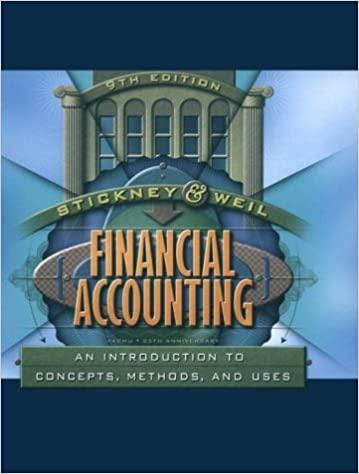Interpreting disclosures relating to LIFO inventories. A note to the financial statements of Deere & Company reveals
Question:
Interpreting disclosures relating to LIFO inventories. A note to the financial statements of Deere & Company reveals the following:
Substantially all inventories owned by Deere & Company and its United States subsidiaries are valued at cost on the "last-in, first-out" (LIFO) method.
During the fourth quarter, Deere & Company's inventories declined due to a lower level of production. As a result, lower costs which prevailed in prior years were matched against current year's revenues, the effect of which was to increase net income by $20.8 million or 28 cents per share.
If all the company's inventories had been valued on a current cost basis, which approximates FIFO, inventories at year-end were estimated to be ,S 1,885 million compared with approximately $1,941 million at the beginning of the year The balance sheet reported inventories of $760.9 million at the end of the year and
$872.0 million at the beginning of the year. Assume an income tax rate of 34 percent for the current year and all prior years.
a. The second paragraph refers to inventory declines caused by lower production levels. By how much did the costs of the older inventories "matched against current year's revenues" differ from current costs? Give the amount and indicate whether it was larger or smaller.
b. How much did the dip into old LIFO layers, referred to in the second paragraph, cost Deere in extra income tax payments?
c. How much did Deere save in income taxes for the current year by using LIFO instead of FIFO? {Nolc: Deere would have saved even more if it had not dipped into old LIFO layers.)
d. How much has Deere reduced its income taxes payable since it adopted LIFO?
Step by Step Answer:

Financial Accounting An Introduction To Concepts Methods And Uses
ISBN: 9780030259623
9th Edition
Authors: Clyde P. Stickney, Roman L. Weil





